A Unique Blend
Capturing Guyana’s ‘essence’ through photography, poetry, and agriculture

and
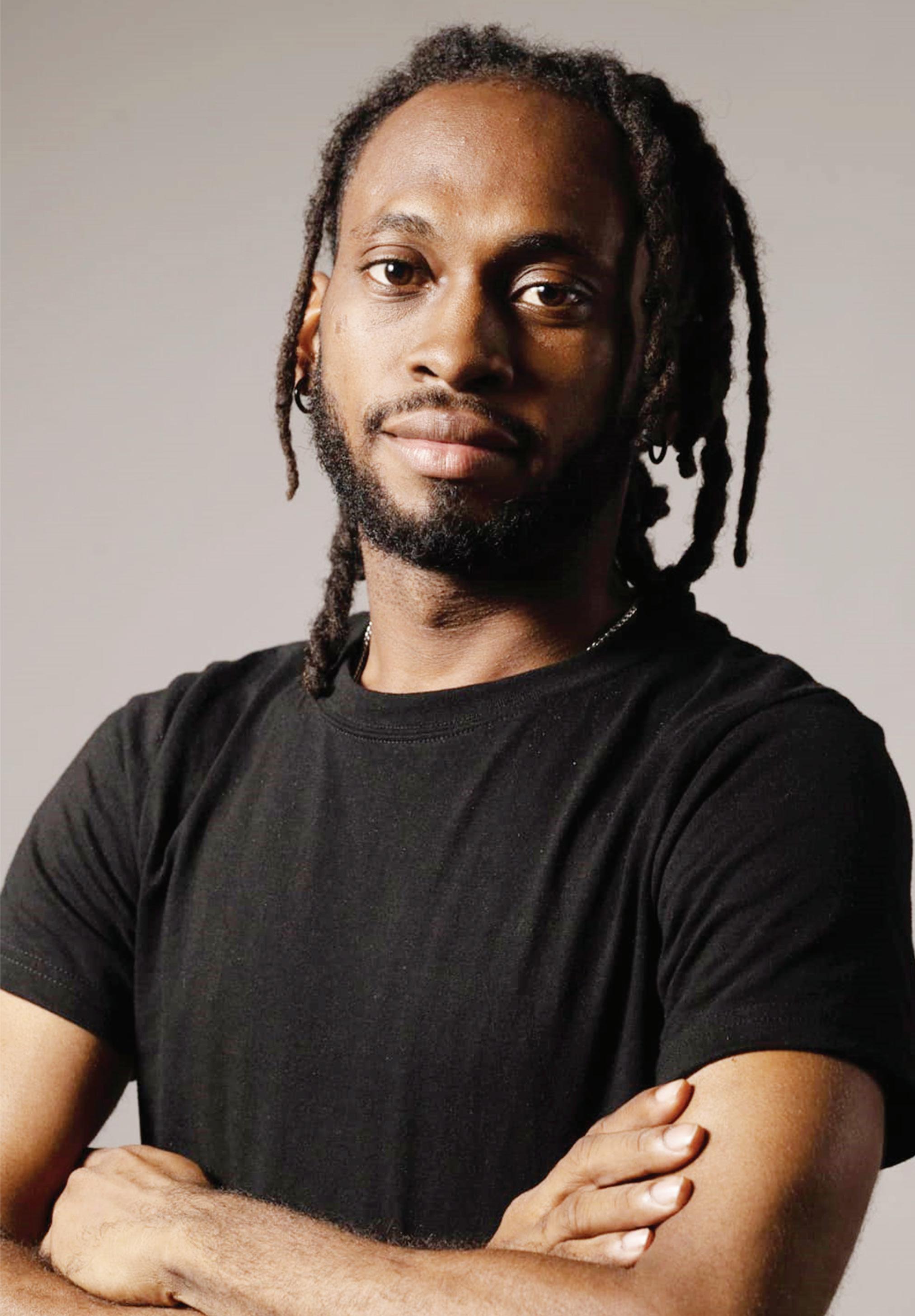
Sunday, January 26, 2025

Capturing Guyana’s ‘essence’ through photography, poetry, and agriculture

and

Sunday, January 26, 2025
By Shaniya Harding
CREATIVITY can be sparked by anything, and, in Guyana, there seems to be no shortage of artists inspired by the country’s beauty. Born in 1994, Sheliza Rampersaud is an artist whose creative journey explores the intricate relationship between the natural world, human existence, and cultural diversity. Her work is a compelling fusion of these elements.
Although raised on the East Coast, Sheliza’s artistic inspiration is deeply rooted in her profound appreciation for nature. She finds endless fascination in Mother Nature, from breathtaking landscapes and seascapes to enchanting forests, flora, and fauna.
At 30, Sheliza says that art has been a part of her for as long as she can remember. However, it wasn’t until high school that her potential was truly realised, leading her to attend the Burrowes School of Art. "I am from Georgetown. I grew up on the East Coast. I would say I have always been an artist. I've been drawing since I was small. Then, when I got to high school, I became more interested in it, and I went into the art stream," she told Pepperpot Magazine.

After high school, Sheliza earned her art certification at the Burrowes School of Art, describing it as an eye-opening experience. "At CXC, I was encouraged by my art tutor and my class teacher to join the Burrowes School of Art after I graduated. Directly after high school—I wasn’t even fully graduated yet—I just went over to Burrowes." She added, "Burrowes was a whole new idea of art; it was so much more than what we were taught in high school. It exposed my mind to so much."
Connection to nature
Sheliza shared that landscapes and nature portraits not only fascinate and inspire her but also serve as an escape. "I mainly do landscapes, flora and fauna, wildlife, and wildlife itself. I'm not a big fan of portraits, but I do them occasionally. I find a connection with nature. Growing up wasn’t easy; things didn’t come easy to me, so in order for me to escape from my everyday life and struggles, I went on trips," she said.
Sheliza is skilled across various mediums. In addition to her vibrant landscapes, she also works with ceramics, an art form she learned at the Burrowes School of Art. Although passionate about creating handcrafted
ceramics, Sheliza acknowledges the challenges of pursuing this seemingly simple art form. "I started doing ceramics in art school. I don’t do it a lot now because access to clay is very hard. You have to go up the highway, dig it, bring it back, and process it. The machinery is very expensive here, and there aren't many places in Guyana that offer these services. Instead of using natural clay, I sometimes use modelling clay or dry clay to create pieces," she explained.
Recognition and challenges Today, Sheliza’s pieces have been featured in many art exhibitions, and her work is known for its vibrant colouring and bold
TURN TO PAGE VI

By Shaniya Harding
PHOTOGRAPHY, poetry, and agriculture are not typically associated with one another, but photographer and aspiring agro-food scientist, Joshua Macey, has been turning heads with his fine art photography that captures Guyana's agricultural landscape, traditions, and rich history.
Most days, 27-year-old Joshua ‘Tujay’ Macey can be found working among crowds as a professional photographer attached to the Guyana Police Force. However, as someone brimming with creativity and passion, Joshua is also an artist. A recent winner of the Caribbean Media Awards, his creative photography captures the true ‘essence’ of Guyana. Moreover, he has a profound love for agriculture. Although photography and agriculture are not commonly paired, Joshua says they work well for him in his mission to show the rest of the world the beauty of Guyana.
Early Life and Passion for Creativity
Born in Prashad Nagar and raised as the eldest of five siblings, Joshua discovered his love for comedy at an early age, often doing a number of things to entertain his family and classmates. As he shared with Pepperpot Magazine, he viewed comedy as a way to express himself and stand out. "In primary school, I was mischievous. Also, some stuff was happening at home that was interesting." He continued, "Even when I was in primary school, I would do a lot of things to get attention and stand out. I think I was crazy. I was weird and creative since then."
Joshua says his era of self-discovery came in high school, where he began crafting his own jokes. Recalling his high school days,
Joshua shared, "I never really had a clique of friends, but I had friends. In the back of the class, we’d be singing, and I used to just listen. I used to rap in the back of the school building, trying to come up with important raps because I didn’t like poetry back then. I loved comedy. I really wanted to be a comedian."
This love for comedy and words would later lead him to another art form: poetry.
Career beginnings and creative evolution
Although deeply creative and passionate, after high school, Joshua was unsure about his next steps. He joined the Guyana School of Agriculture (GSA) and soon discovered a love for agriculture and plants. It was also at GSA that he met a team of like-minded creatives. "After high school, I applied to GSA because a friend told me about it, and I did my research. I wanted to do something with agriculture. I didn’t know I liked agriculture then, but I knew I wanted to do something. GSA was an amazing experience in my life. Far better than high school."
He added, "In 2015, I joined this thing called Dreamers Records. I used to try to sing and rap."
For several years after completing GSA, Joshua immersed himself in the creative arts and even gave himself the name Tujay, inspired by his initials and advice from his father. "At that time when I was doing poetry, I also created Tujay. I wanted a poetic and creative name. My father once told me, 'You have to decide. Only you can decide if you want to make it.' So, I wanted a name that would allow me to grow and change. That’s how I came up with Tujay," he said.
Joshua pursued poetry consistently for several years. Although challenging, he was—and still is—a prominent part of Guyana’s poetry landscape. How -

ever, he says the field has changed drastically in recent years. "A lot of things have changed in Guyana when it comes to poetry and the creative arts." Reflecting on his childhood experiences, Joshua shared that poetry, like calypso, was heavily based on social and cultural commentary. "Now, my poetry is more Guyanese. I had to stop listening to Def Jam poetry and find my Guyanese identity. I had to sit down and learn to love that part of me," he said.
Discovering photography and finding purpose Joshua has also excelled in photography, winning the 2024 Caribbean Media Award for Best Photojournalism. Though picking up a camera now feels second nature, Joshua admits that he didn’t always know he would become a photographer. "I didn’t know I was a photographer. I just liked it. I realised I liked photography when my co-worker lent me a T3i camera. I just started snapping. By 2018,
made me realise I’m drawn to African and Caribbean history and spirituality in my work," he shared.
As his more creative pieces garnered attention, Joshua began to see photography as an art form, and himself as a fine arts photographer. "I learned that photography can be an expression of African and Caribbean heritage. My work, like Irem Him White Ivory, explores Guyanese culture and Creole spaces, which made me see myself as a fine arts photographer," he said.
In addition to culture and history, Joshua showcases Guyana’s captivating natural diversity, working with local businesses to professionally capture their products. "Photography and agriculture are connected for me. I’ve used photography to highlight local agri-processors and their products, like cassava, coconut oil, and honey. My goal is to make their images look international," he said.
Looking ahead
Looking ahead, Joshua hopes to pursue a career as an agro-food scientist, with photography as a hobby that allows him creative freedom in fine art. "I want photography to be my peace. I don’t want to do it every day. If I can create a concept each year, I’ll be happy. My career goal is to become an agro-food scientist, but photography will always be a part of me," he said.
I bought my own budget Canon T6 camera," he explained.
Over the years, Joshua has cultivated his own photography style—not just in how his photos appear, but in the subjects he captures, often focusing on historic and traditional themes. "One of my biggest photography highlights was submitting to the Guyana Annual in 2020. Two of my pieces, Mama Fifi and Masquerade Man, got honourable mention. That moment
For someone seemingly involved in everything, Joshua encourages young creatives to tell their own individual story through whichever medium or voice feels right for them. "For aspiring artists, I’d say: Keep creating. The world wants to hear your story. Tell your narrative, and if others reflect on it, that’s a bonus. Leave a piece of yourself in your work, so if you’re gone tomorrow, you’ve left something meaningful behind."
By Michel Outridge
HAVE you ever felt insecure about your body type or feared fat-shaming as a plus-sized woman struggling to find the perfect dress for a special occasion?
If so, worry no more because there’s a unique business just for you. It’s
called Ma Cherie, a clothing brand tailored for all body types, shapes, and sizes.
Finding the ‘perfect’ dress locally can be a challenge, as most highend boutiques and other stores rarely cater to women with diverse body shapes. But Ma Cherie, a local boutique catering to
all sizes, stands out, offering styles and options for everyone.
Owned by Cassandra Amalia Gibson, a 29-yearold attorney-at-law with a passion for style and fashion, Ma Cherie began as an online business. Cassandra, who practised law for four years with a local firm, started her dress and


Amalia Gibson
earring businesses as a way to fulfil her love for fashion.
Speaking to Pepperpot Magazine, Cassandra shared that her deep passion for style inspired her to create a small business that has since grown significantly in clientele.
A fun-loving and outgoing individual, Cassandra pursued her dream and now features her collection in The Girl House store on Middle Street, Georgetown, a collab -
By Shaniya Barding
ART in Guyana remains as vibrant as ever, with new and blossoming creatives constantly bringing something fresh to the table and raising the
bar. While many argue that there should be more support for the arts, Guyana continues to nurture innovative talent.
One shining example is 28-year-old
gym supervisor and portrait artist Roann Pierre, a self-taught creative whose passion for drawing began in nursery school. Born in Charity on the Essequibo Coast and raised in

Georgetown, Roann's artistic journey has evolved from sketching classmates' portraits for a hundred dollars in high school to creating commissioned masterpieces. Despite the challenges of navigating a market where art is often undervalued, Roann is determined to continue blending creativity with her mission to leave an indelible mark on homes locally and abroad.
Early Beginnings in Art
Roann credits her love for people, shaped by her upbringing in Georgetown, as a significant influence on her art. Self-described as a quiet child who mostly kept to herself, Roann says her interest in art started in nursery school. "I was very quiet and always liked art for some reason. My dad was also dabbling, and he was very creative. So, I definitely got that from him," she shared.
"I started taking it, like, semi-seriously during high school. I used to draw and, like, you know, charge the kids, like, a hundred dollars for drawings. And then, about eight years ago, one of my friends was telling me, she was like, 'I would pay you to have a drawing done by you, like, portraits.' I'm like, okay. And then, that's how it started," she recalled.
Almost a decade ago, Roann spoke to

Pepperpot Magazine as a young artist gaining attention among Guyanese art enthusiasts. Now, eight years later, she has become known for her portraits, offering a variety of styles that capture the essence of her subjects, bringing smiles and memories to life.
Although she can draw almost anything with a pencil, Roann says faces and expressions most inspire her.
"I like people. But I don't like to be around them if that makes sense. So, I like to study them, I like the sight of them, but that's about it. I could look at somebody and just look at the lines in their fac-
es, and I want to draw them," she explained. Every artist's creative process is unique. For Roann, it starts with a photo of her subject, and she begins with the eyes. "If you want or need a portrait, you just have to send me a photo and tell me what size you want. I walk them through the prices, the possibility of background, whatever they need. If they want to add anything, we can merge separate photos and make one. All of that depends on the cost," she explained. "I start with the eyes, always the eyes. And it’s freehand drawing. It’s not like you use a
look. However, there was a time when Sheliza took a step back from art. She explained to Pepperpot Magazine that she did not see art as a viable profession. "I took a break and focused on other things. But given the state of art in Guyana, it didn't really work out, so I had to find a regular job."
Although her pieces gained recognition from foreigners, the lack of local support played a major role in Sheliza stepping back from art. "The stigma surrounding art in Guyana is that locals don't appreciate it as much as outsiders," she said. Despite this, her hiatus didn’t last long, as she soon found herself drawn back to her art. "I dropped art for a few years and worked a regular 9-5 job. Then, I slowly got back into it and
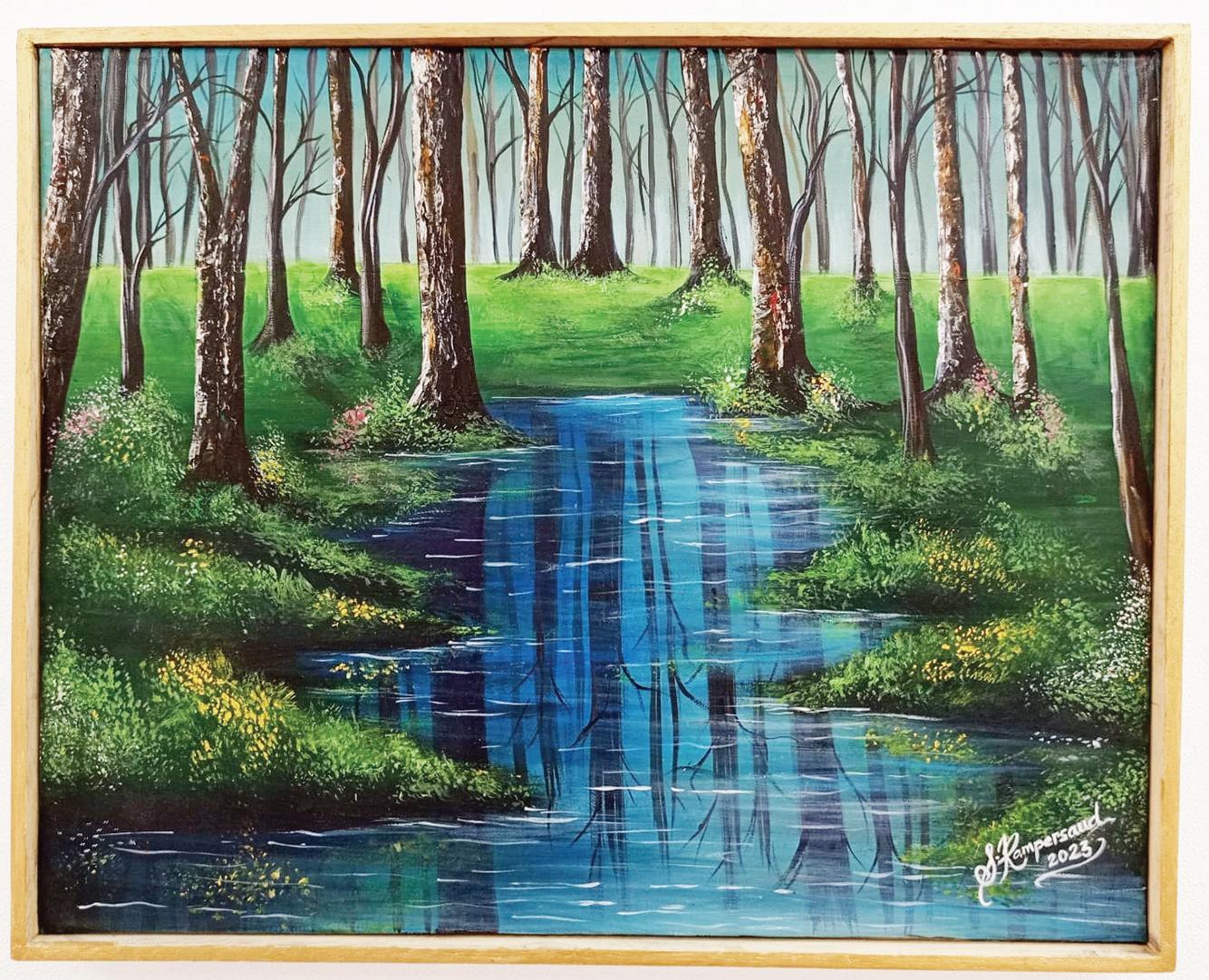
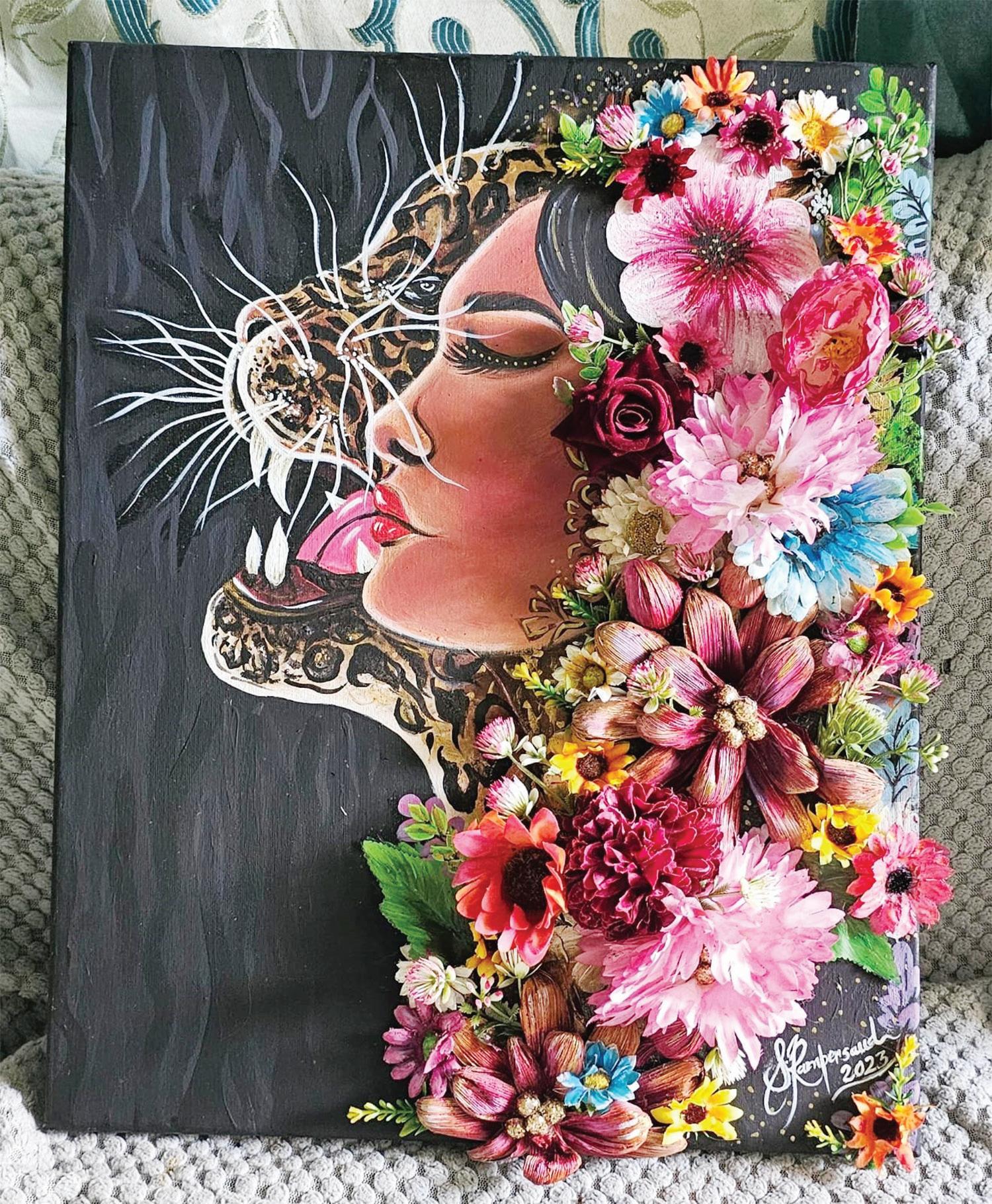
started creating again."
Returning to the art scene with renewed passion, Sheliza began painting once more. One of her biggest supporters came in the form of other local artists. She shared, "In 2018, I started working with George Simon. We formed a group called the Moving Circle of Artists. He founded it, and we would teach art classes in villages. In return, the villages would provide us with lodging and accommodation. I take most of my inspiration from nature."
Looking ahead
Now, art is a staple in Sheliza’s life. Although her work is far more recognised now than when she first started, there are still challenges in gaining local support. "Although I still struggle with the stagnant art scene in Guyana, I think it’s more viable for me now. I can actually make some revenue from it," she said. This shift may be due to her growing recognition as an artist. While art is not always the easiest pur-
suit, Sheliza says it is simply part of who she is, and without it, she feels incomplete. "When I stopped creating before, I felt like part of me was missing. As much as I would like to give it up, I don’t think it's something I can do in the long run. I have to keep creating," she shared. "I would like art to be more locally recognised in Guyana."
Sheliza believes that art has provided her with an escape from reality, allowing her to immerse herself in the beauty of nature and express it on canvas in her unique way. Her art often blends surrealism, abstraction, and realism, creating a mesmerising fusion of emotions and the natural world, recognisable by her distinctive colour schemes and painting styles. Looking ahead, Sheliza hopes to create a safe space for young artists. "In the future, I hope to create a little art space, either to sell art or as a space where other artists can come and create," she said.
orative hub for women in business. Her earring brand, Ear Candy by Cass, is also stocked here, allowing customers to find statement dresses
itself on affordability and customisation, ensuring clients find the perfect outfit, whether it’s a dress or accessories.
In addition to her instore offerings, Cassandra
her business as an exclusive shopping experience, personalised to suit each client’s style, fashion preferences, and specific occasions.
“With my clientele,

dresses, along with earrings and jewellery to match.
A city girl at heart, Cassandra is motivated by her passion for fashion and the opportunities in Guyana’s market. While the journey requires patience, she remains optimistic about the future of her business.
feel like doing business, but I know my curated dresses and personalised approach will keep my business thriving,” she said.
Cassandra explained that all her dresses are hand-picked, ensuring her collection is exclusive. She avoids buying random pieces, focusing instead on selecting high-quality, unique outfits.
challenges, Cassandra is determined to keep her operations viable and financially successful.
She continues to practise law, taking on cases when she is in Guyana. This dual role allows her to pursue her love for both law and fashion.
Cassandra’s advice to aspiring entrepreneurs is to remain disciplined and embrace multiple passions, refusing to be confined to one path. FROM PAGE IV
“I believe in myself. I have the passion, drive, and discipline needed to succeed. There are days when you don’t
On the rack at The Girl House on Middle Street
and earrings all in one place. Additionally, Ear Candy is available at Koko Natural Hair Store.
Cassandra sources high-quality dresses from various suppliers, offering them on a wholesale and retail basis at pocket-friendly prices. With her tagline, “It’s an add-to-cart kind of day,” Ma Cherie GY prides
operates an online business, selling exclusive items through pre-orders. These items range from clothing and makeup to skincare products, all at affordable prices. She explained that some customers prefer exclusive, one-of-a-kind outfits and items, which is why she caters to such requests.
Cassandra described
I’ve been able to build stronger relationships, understanding their style preferences to create the perfect outfit or dress for them. It’s been a learning experience, as, together, we develop unique and trendy fashion pieces,” she said.
Her ultimate goal is to open a boutique—a storefront filled with beautiful
While being a woman in business presents

graph; you don’t copy and paste. It’s just proportion, perspective, everything," she added.
Though Roann has received a number of commissions this year, she acknowledges the challenges of being an artist in Guyana. One major hurdle is getting people to see the value in art. "I don’t really charge much because I know it’s something that people can’t really afford that much in Guyana," she shared. "They love it, but it’s just that—it’s the pric-

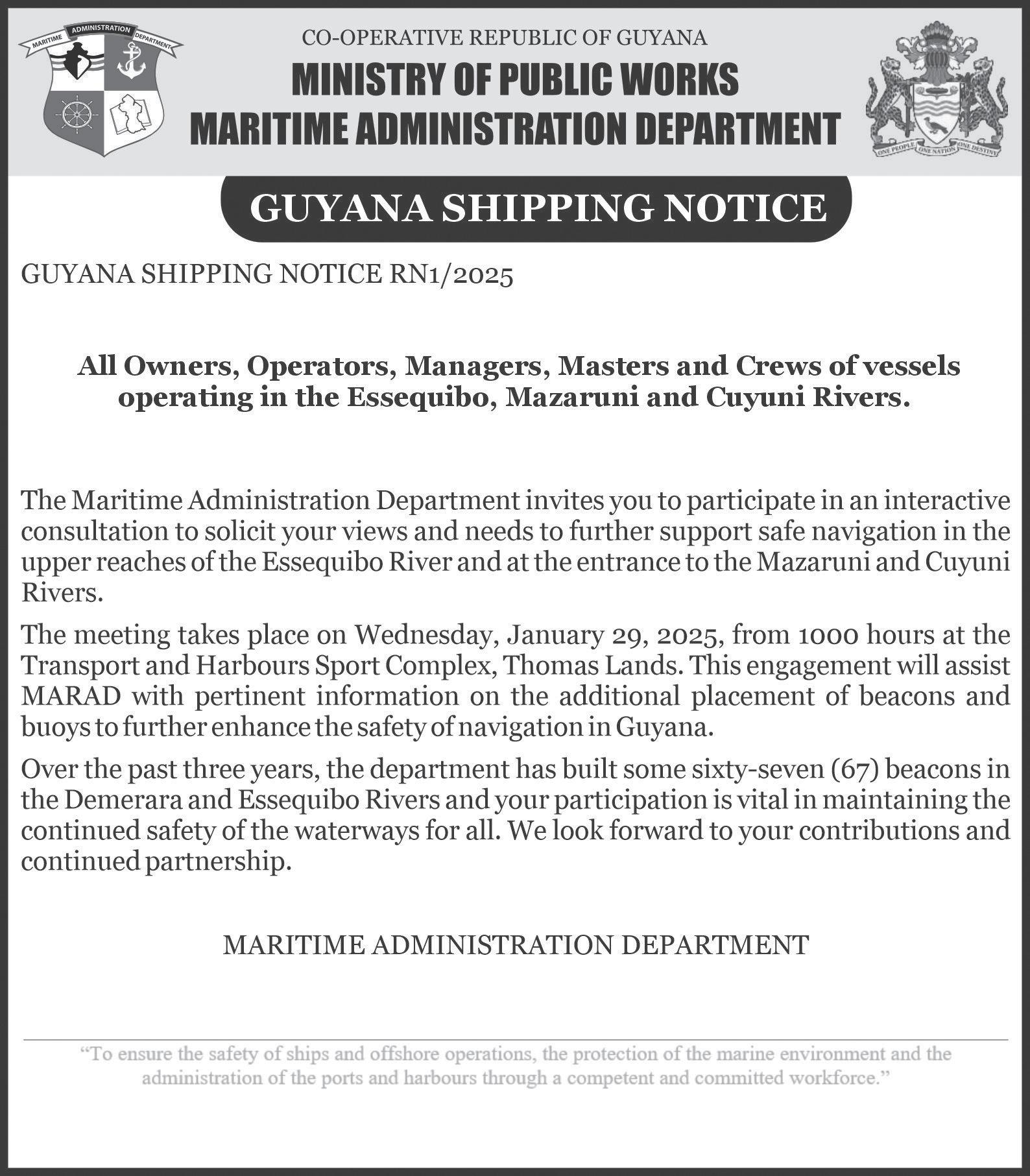
es, and you have to pay to appreciate these things."
The Support of the Community
Although relatively small, Roann describes Guyana’s art community as close-knit and supportive. "When people come to me and ask for a painting, I don’t do paintings. So, I then recommend another artist. That’s how we go around. It’s like a circle," she said.
"For me, the field of artists in Guyana is small because I know a few of them. But they’re amazing, really, really talented people. And they all have one or three things that they would actually do, which is ceramics and painting, or painting and pencil," she explained.
Recent years have
been eventful for Roann, with participation in several art exhibitions that have garnered strong support and positive feedback.
One of her most notable moments came during last year’s Eiripan Exhibition, where her drawings sold even before the event officially began. "Last year, I took part in the Eiripan Exhibition, where I sold two pieces. When I first took my pieces in to actually display, I jumped out of the car, got the piece, put it on the table. The planners were there. Someone saw it and said, ‘I want this one.’ So, before the exhibition started, it was already sold. And then the next one, like five minutes into the exhibition, the other one sold," she shared.
Future aspirations
Although art is not her full-time job, Roann believes it is possible to sustain a career in the field, especially for multifaceted artists. Currently, she is working toward opening her own studio and hopes to see more public support for the arts. "Art is something worth supporting because we don’t get a lot of it, especially from the government. Everything has to come out of pocket for us. And seeing that people are now paying the prices for art, it’s very hard to sustain that, especially when you have to buy materials. People like to see art. But it’s not going to go anywhere unless people support it," she stated.



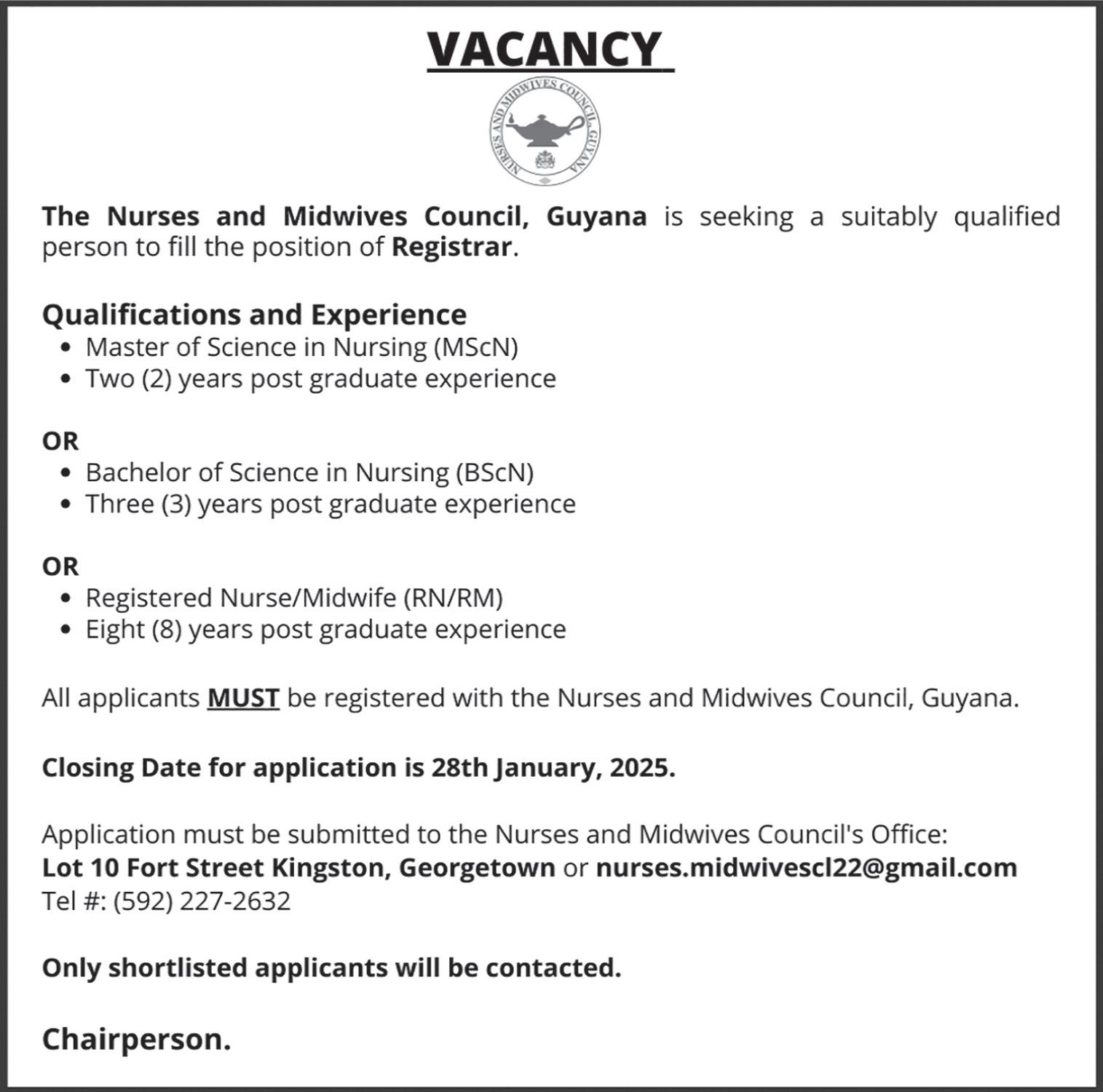






THE irony of this column piece this week is the fact that so many of us feel lonely in a world filled with eight billion people. In an age of technological advances like no other, hyper-connected through the internet, we still feel isolated. Social isolation should be considered a serious threat to our health, and this week, I wanted to discuss the implications it
can have on all aspects of our lives.
Social isolation is the physical separation from other people. It refers to the lack of or limited social in-
TURN TO PAGE XIII


teractions with others. It is not the same as loneliness. Loneliness is defined as the emotional distress or challenge that results from the lack of meaningful or positive connections with other people. In essence, someone can be socially isolated and not experience loneliness. It is also possible to be surrounded by people and still feel immensely lonely and disconnected. Despite these differences, both of these experiences can be very challenging to overcome. Loneliness affects one’s overall quality of life, particularly their mental and emotional well-being.
Social isolation and feelings of loneliness can result from the inability to foster and maintain healthy connections. We often establish friendships or relationships without understanding the effort and support required to maintain them. Some of us may have close people we consider friends, but how often do we check in with them or try to meet up? Do we allow work or other responsibilities to get in the way of maintaining bonds and connections? How do we strike a balance between responsibilities and maintaining relationships? The answers to these questions will be unique to each individual. Only you can determine what those answers are for yourself.
In the era of social media technology, we often try to substitute physical connections with online ones. While I agree that social media is a great way
of maintaining connections, I also think it can only help to a certain extent. When we allow online spaces and mediums to replace our physical connections, we further increase our social isolation and feelings of loneliness. Sometimes, our social isolation may be a sign of an underlying mental health condition. Depression and anxiety are often linked to social isolation. As such, I urge you all to seek professional advice and help so that you can develop positive coping strategies to address your mental health issues, social isolation, and loneliness.
It is often said that we must enjoy our own company first before we can enjoy the company of others. As such, I hope that as you reflect on the way forward, you are kind to yourself by showing self-compassion. As you start rekindling relationships and addressing loneliness, you should also work on building a healthier relationship with yourself. In sociology, we are taught that human beings are "social beings," and as such, we thrive best in supportive groups and communities.
As we collectively work to improve our communities, I hope we can all also notice the signs when people socially distance themselves and reach out to them if necessary. After all, in the words of Mother Teresa, the Albanian-Indian Catholic nun and missionary, “Loneliness and the feeling of being unwanted is the most terrible poverty.”



My last two columns covered the first four stages of intentional change: pre-contemplation, contemplation, preparation, and action. Today, the focus is on the fifth stage—maintenance—and how we can best sustain longterm changes, having already taken action. Many believe this to be the hardest stage, as New Year’s resolutions often remind us
that making change is easy, but maintaining it is not.
Maintenance requires either drastic minimisation or total abstinence from unwanted behaviours or the habitual incorporation of desired ones. I previously wrote about building better habits, as they are the strongest predictors of sustained behaviour change due to their ability to become automatic, in -
grained actions. This stage is about ensuring your new behaviour requires less physical and emotional effort— making it second nature and part of your daily or weekly routine.
If you struggle at this stage and find yourself reverting to old habits, remember that returning to the comfort zone is human nature. However, overcoming challenges is also a fundamental part
of our genetic makeup.
The key to success in this stage lies in tapping into your recovery capital—both internal and external resources you can draw upon to begin and sustain positive change and support.
Internal resources include self-esteem, values, and coping skills, while external resources consist of support systems, finances, access to

healthcare, and so on. When counselling people in the maintenance stage, I focus primarily on enhancing internal resources, as too many Guyanese lack major external ones. Either way, it is empowering to realise that you can be the sole source of your improvement.
I place a strong emphasis on emotional control and regulation. I firmly believe that when we become the primary source of our emotional stability, our entire life improves. Make no mistake, achieving composure takes incredible effort—but it is achievable, and here’s how to start.
Emotional control and regulation
Emotional regulation is the ability to acknowledge and express emotions healthily. It involves controlling your current emotional state—the intensity with which you experience it and the way you express it. Every day, we experience hundreds of normal but negative emotions, such as anger, sadness, and jealousy. The ability to intentionally control and manage these emotional states makes you the most resilient and interesting person in the room.
The first step to curbing emotions is understanding how they arise.
Step 1: Pay attention to your thoughts If you are trying
to change your mood, you are already too far gone, as thoughts precede feelings. Our experiences mean nothing without the interpretation and meaning we assign to them. If you notice yourself experiencing a negative emotion, pause and ask:
• What am I thinking?
• What specific thoughts are triggering this emotion?
Once you have the answers, follow up with:
• What evidence do I have to think this way?
• Would I encourage someone else to think this way?
• How are my thoughts contributing to my negative emotions and experiences?
Negative emotions often feel natural and instinctive, but they don’t have to control us. For example: Typical response:
• Someone says something disrespectful.
• Thoughts: I’ve been embarrassed/disrespected and must react.
• Emotions: Anger, jealousy, sadness.
• Behaviour: Outbursts of rage or tears. Improved response:
• Someone says something disrespectful.
• Pause.
• Thoughts: Why do I feel disrespected? Was this intentional? Is it even true? Could it be

STARS scatter the sky like flowers in a field. Dreams weave through the fabric of young minds. Each of us is born with a destiny—or so we like to believe. As we journey through life, we encounter obstacles that remind us of how little control we truly have in the grand scheme of things. Like a single star in the night sky or a dream lost in the darkness of sleep, we struggle to stand out and stay afloat. No matter how hard we try, no matter how much of ourselves we burn to capture the attention of others, our efforts often fall short, leaving us stand-
ing right where we began We are frequently told about the importance of darkness and failure. Without experiencing darkness, we could never appreciate the warmth of light. Without the pain of being trapped, we could never savour the joy of freedom. Yet, these truths do little to make darkness or pain that is easier to endure. Hopelessness robs us of the energy to imagine a brighter future. When we feel utterly hopeless, it is difficult to console ourselves with the belief that today’s suffering will make tomorrow’s happiness more profound.
Learning to walk without falling is impossible. Similarly, it is impossible to navigate life without failing, making mistakes, or encountering situations that hurt us. As young people exploring the world, how do we survive these inevitable moments of pain and suffering without letting them consume us? How do we keep going when hopelessness feels overwhelming? After all, the beauty of life lies first in learning to survive and then in thriving. The answer is to hold on until you find your purpose. Once you do, let it anchor you through life’s storms.

The unvarnished truth is that no one can guarantee that tomorrow will be better. If today is challenging, tomorrow might be the same—or even worse. Life is not about perpetual happiness or success; it is about fulfilling a purpose. Each person has a role to play—something to change, someone to help. Life is about finding the road that leads to this role. Pain and difficulties can cloud our vision, but a sense of
purpose gives meaning to our struggles.
Consider a root growing from a plant. It meets rocks and obstacles as it grows, yet it persists—pushing through the obstacle or finding a way around it. The root does not know if a clear path lies ahead, but it continues because its purpose is to nourish the plant. If the root gives up, the plant withers and dies.
Purpose is different for
everyone and can take many forms. It does not have to be a career, an achievement, or a grand accomplishment. It can be as simple as connecting with others. The best way to stay motivated through life’s challenges is to find a purpose that anchors you and keeps you grounded. Seek and embrace your purpose so that the weight of your troubles fades over time.


FROM PAGE XIV
more about them than me? Does this actually require a reaction?
• Emotions: Concern, empathy, understanding.
• Behaviour: Seek clarification or walk away.
Same situation,
entirely different outcome—achieved by reframing your thoughts. Managing negativity bias
Humans naturally focus more on negative emotions than positive ones. Even on a day filled with equal parts joy and frustration, emotions like anger and

jealousy often dominate. Make it a habit to acknowledge and savour positive emotions in the same way you dwell on negative ones.
Behaviour combinations and relapse prevention
Combine new behaviours with existing tasks or activities. For example, if your goals include exercising and spending more time with family, organise a weekly sports activity together.
Create a Relapse Prevention Management Plan, a personal and accountable blueprint tailored to your goals. It should include:
• Goals: Clear objectives like “reduce alcohol consumption.”
• Triggers and Challenges: Identifying circumstances that could derail progress.
• Daily Self-Care Plan: Actions to cope with triggers, such as
healthy eating, hydration, rest, and exercise.
• Emergency Action Plan: Specific steps for when challenges arise, such as calling a trusted friend.
For example:
Goal: To consume less alcohol.
Triggers: Socialising at bars, pressure from friends, stress, etc.
Plan: Communicate goals, avoid bars, prepare a favourite non-alcoholic drink, and engage in hobbies to divert attention.
Final thoughts
Be open about your goals. Social accountability increases your chances of success. Change begins with acknowledging who you are, identifying who you want to become, and creating a path to bridge that gap. Change can feel like a burden or an opportunity—the choice is yours.


SHE took a deep breath and said, with a tinge of fear in her eyes, “I guess it’s now or never.”
“Yup,” he smiled encouragingly. “It’s time to take back something of your life.”
He took her for a drive along the East Bank to the
ensuring she wouldn’t feel any discomfort.
“Would you like to come out and sit on the seawall for a while?”
She shook her head, uncertain, and he said, “Okay, I’ll go get us something to eat.”
He didn’t take long to
“Well,” he said, pausing for effect and putting down his burger, “she’s a beautiful girl with soulful eyes and a warm smile who seems to have lost her dream somewhere and is searching for happiness.”
She seemed a little

roundabout on Mandela Avenue. As he slowed down at the curved approaches, she had a good view of the new infrastructure and the model of the Harpy Eagle. He could see she was thrilled in her calm way. As they headed back to the city, he asked, “Feeling good?”
She nodded, a bit choked with emotion, and he reached across and squeezed her hand lightly.
“It gets better from here.”
He drove to the seawall and parked away from the crowded area,
return with burgers and drinks, and as she took the first bite, she said, “Mmm, this tastes really good.”
“Yup, one of my favourite cooks.”
“I’m guessing with your early hours on the road, you eat a lot from street food vendors and shops.”
“Yes, to the point where one of them has won my heart.”
She stopped eating the burger and looked at him, feigning surprise. “Really? And who might that be?”
stunned by his words, then smiled and looked away, unsure of how to respond.
“And,” he continued after a short while, “being with her is flirting with danger, but I’m willing to take that chance.”
“Why?” she asked softly.
“Because she needs me.”
In that moment, as they sat in their own little world, touched by the cool wind of the Atlantic, a love story was born— shadowed, however, by
the steel fingers of danger. Nothing more was said, nor needed to be said until it was time to leave.
At her home, as he said goodnight, she touched his hand and said, “Thank you for a wonderful outing—it’s made me feel better.”
“That, I’m happy to hear,” he said, kissing her cheek lightly. “Sleep well.”
For the first time in many nights, she did sleep well. Her mind was at ease, and the following day, she felt her spirits refreshed. Her mother,
noticing the change in her, was somewhat relieved, having been tormented by the constant abuse her daughter endured.
Rachel began preparations to start her food business. The bruises on her face were fading, and she hoped her husband


‘We’, a group of familiar males, sometimes gather and chat by Bourda Market and Old Orange Walk. After a few moments of conversation, we head off to fulfil the day’s tasks. Whatever topic we discuss, our conversations often end with reflections on the immediate world of Georgetown and what intrigues us.
Frequently, our attention turns to the humanity visible on the pavements. It is an undisputed fact that 90 per cent of the pavement dwellers are male. Not that anyone would suggest such situations require gender balance, but the faces we see often change, and the numbers seem to grow. Upon closer
examination, it becomes clear that not all pavement dwellers are drug users, though many are. Nor are they all destitute pensioners. Among the men, there is also a scattering of women and younger people. We can trace this issue back to its roots. Using examples from our own experiences, we recall instances where elderly persons, predominantly men, were abandoned at the Public Hospital by heartless relatives, even spouses, who never returned. Many of these men passed away in institutions, with no one stepping forward to take responsibility for their final arrangements.
This crisis often stems from a familiar story:
young males pulled out of school to fill the void left by absent fathers. They were forced to take on adult responsibilities too early. These children, thrust into maturity before their time, are now the lost adults of today. In contrast, elder sisters were rarely removed from school. Some elder brothers, burdened by the same responsibilities, eventually disappeared, leaving no contact information behind, eager to escape their circumstances. However, the problem with running away is that when faced with new challenges, such men may flee again.
Years ago, I had a conversation with the late Parker, a good friend, about a young security
guard we knew. This guard rented a room in a cheap hotel nightly. He would occasionally lean on us for advice, and one day, we suggested he find a small place to rent. Assuming he had a partner sharing the room, we thought they would both benefit from stability. To our surprise, he admitted there was no partner. Instead, he was escaping a household where his older sisters took every penny of his salary. Today, he is likely still on the streets, surviving thanks to the kindness of charitable souls who provide food for the destitute.
Why am I addressing this issue? Over the years, I have written several perspectives on what I consider a significant problem. I
recall an interaction with a director at an institution where I was paying off a loan for my mother’s house. The director commented, “You’re dutifully paying for your mother’s house, and you don’t have one of your own?” I replied, “No, I don’t. But if this house doesn’t exist, everyone will come after me.” He laughed and asked, “How many kids do you have?” At the time, I had one child. I answered, “One, and she’s with my mother.” He chuckled again and said, “I bet she eats like a teenager when you fill the list.” We laughed together, concluding, “It’s a man’s world in the human sphere.”
This exchange, though light-hearted, underscores
a broader issue. Many men, shaped by circumstances that forced them into responsibility too early or left them unsupported, find themselves in desperate situations. Some end up on the streets, while others live in precarious circumstances, burdened by past expectations or societal pressures.
The crisis we see on the pavements is more than just a collection of individual tragedies. It reflects systemic failures and societal neglect that disproportionately impact men, particularly those who were failed as boys. Addressing this issue requires more than charity; it calls for deeper understanding and structural change.






FROM PAGE XVII
wouldn’t return early from the interior.
That evening, Dravid took her out for another drive, this time over the Demerara Bridge to the West Bank.
“Nice,” she said, looking around with interest at a place she had never visited before. On the way back, he stopped at the seawall again. This time, she got out of the vehicle and sat on the wall. Sighing with contentment, she leaned her head on his shoulder and said, “This feels so good—the freedom and peace. It’s like I can put on wings and fly.”
It felt good to him, too, seeing her happy. He wondered why she had married such a brute of a man but refrained from asking, waiting for when she was ready to talk about it.
One week later, while they sat in a small restaurant on the outskirts of the city, she told him, “I’m sure you’ve been wondering why I married Calvin.”
“Yeah, I kinda have.”
She sighed. “He wasn’t like that when I first met him. He was kind, fun, and ambitious. But not long after we got married, he changed. He started acting jealous, got angry easily, and discarded all his ambitious plans for secretive ‘business ventures.’”
She took a sip of her fruit punch and continued, “I decided to go back home because I didn’t want that kind of life, but he came and apologised, promising he’d change.”
“So you gave him a second chance?”
“Yes, and a third, and a fourth, until I lost control of my own life.”
Dravid shook his head, his expression wry. “He used your forgiving nature to destroy your self-esteem and confidence to keep you under his con-
trol.”
She said nothing, knowing it was true. He placed his hand over hers and said, “You’re still young and have so much to live for. I’ll help you get your life back—I promise.”
That night, after dropping her home, he had just driven off when an SUV turned into the street.
“Damn, that was close,” Dravid muttered. “I can’t keep doing this—I need a different plan.”
Worried for her safety, he lay in bed that night, thinking of ways to help her. Living with his parents, he couldn’t introduce her to them, given her circumstances. He decided to rent a house in Atlantic Gardens from a friend.
The following week, he went overseas on a business trip. When he returned, Rachel’s house was closed, and she hadn’t messaged him. As he walked to his car, he heard a noise inside. Knocking on the door, he called, “Rachel, are you there?”
There was silence, followed by a stifled cry: “Help.”
The door was locked, so he kicked it open and froze at the horrific scene. Calvin had a knife to Rachel’s throat. Blood dripped from cuts on her shoulders and hands.
“Drop the knife. You don’t have to do this.”
“She’s my wife! I can do whatever I want!”
“No, you can’t. She has a right to her own life.”
“You’ve been seeing my wife, haven’t you?!”
Dravid didn’t answer. Calvin pressed the knife closer to Rachel’s throat. Dravid, taking the slightest opportunity, shot him in the arm. Calvin dropped the knife but grabbed Rachel in a chokehold. Dravid shot him again, this time in the shoulder, and pulled Rachel to safety.
Neighbours had gathered, and Dravid shouted, “Call the police!” as he and others tended to Rachel’s wounds. She
was taken to the hospital, and Calvin was arrested and charged with domestic abuse and attempted murder.
One week later, Rachel was discharged. Family and friends greeted her with relief and gratitude. Dravid then showed her a house in Atlantic Gardens.
“Your new beginning,” he said.







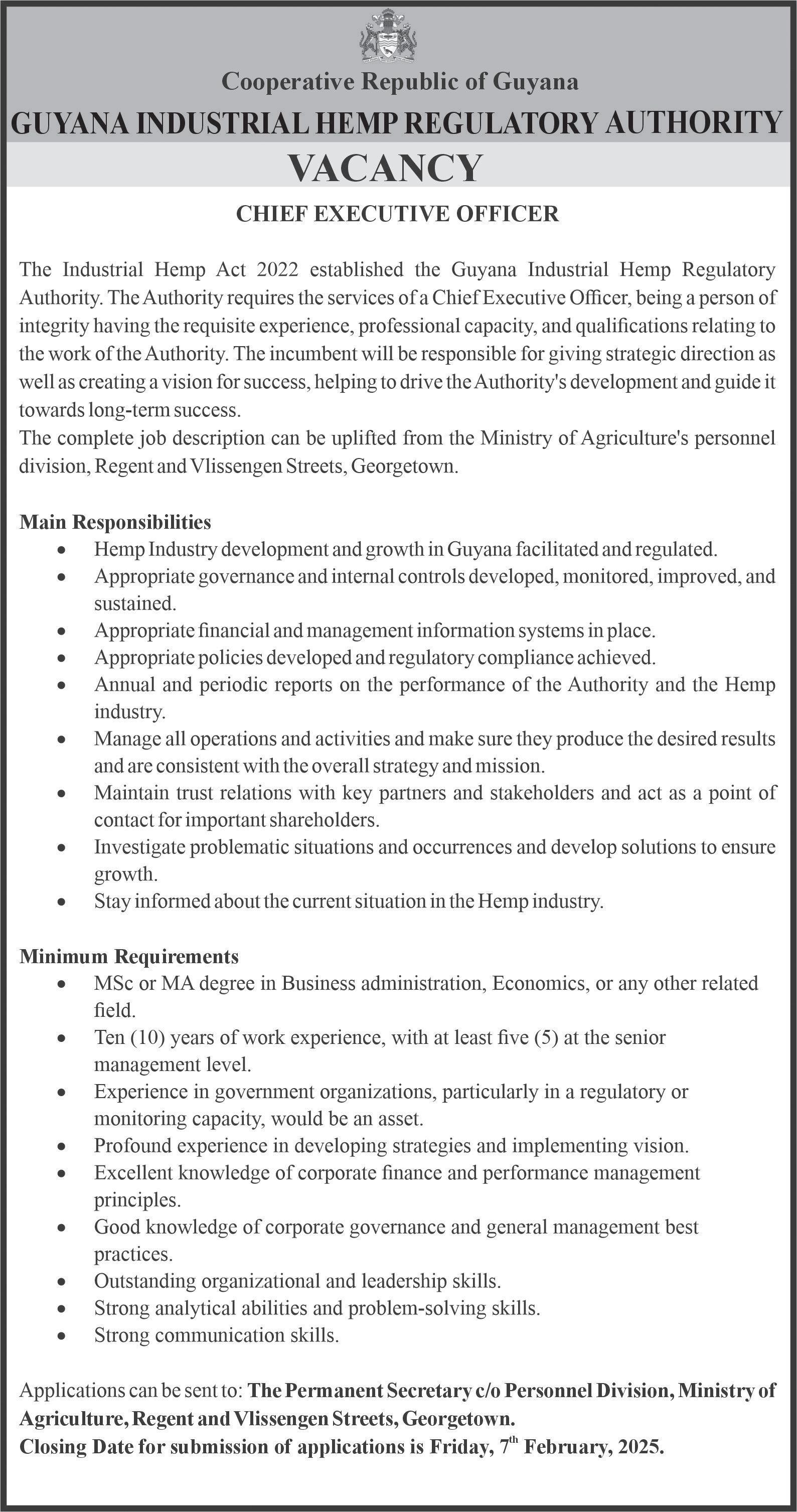

























Dear Student,
Welcome dear reading friend. It is considerably good to have a broad vocabulary which is not difficult to cultivate. Broaden yours best by reading widely to meet new words in a variety of contexts. Of course, it is not good enough to read in one field only. Read in many fields to meet numerous words
in a sufficient range of contexts to clearly establish them in your own vocabulary. Think carefully about a bright future. Be wise. Love you.
THE EXCERPT
Paying attention to the anecdote
Note: The passage below is abridged. It is an anecdote - a form of narrative writing. See its brevity.
An anecdote is a brief
story about an interesting, amusing, or strange event. Writers tell anecdotes to entertain or to make a point. With practice you too can coin a few interestingly amusing ones. Now read the passage carefully and then answer the questions that follow.
Tears of frustration and despair blinded me more than the stinging wind and

January 26, 2025
snow. For 24 hours a storm had pinned us in our camp only 16 miles from our goal - the far edge of Antarctica. We had come too far, endured too much suffering, to lose a man now, I thought bitterly. We had to find him. We clung to a strong rope as we searched. “Keizo!” I yelled into the blizzard. “Keizo! … Keizo!”
Faintly I heard the others shouting his name as they too groped in a tethered arc around the tents and sleds. Our Japanese teammate, Keizo Funatsu –gentle, compassionate Keizo – had crawled out at 4:30 the afternoon before to check on his dogs. By six he knew he was lost. We searched into the night, calling and listening, flashing beams futile against the swirling snow.
Now in the first faint wash of daylight we were searching again.
It was unthinkable that one of us could be gone after what we had come through together for nearly seven months: Trudging, antlike, across 3,700 miles of brutal terrain, from sea level to lonely elevations above 11,000 feet, battered for 50 days by continuous storms that howled at 90 miles an hour.
We had challenged a foreign place, a place not meant for warm-blooded animals. Antarctica’s terrible interior tries to turn men into its own image - frozen. Yet this endurance test had forged a deep and permanent bond among us: six dissimilar men from six nations, attempting to complete the first crossing of the continent by dogsled…
I couldn’t believe it when I glimpsed him - a wraith emerging from the riving curtain of snow. “I am alive,” he said. In seconds we were clutching each other. Both of us were crying. Keizo was a skilled survivor. Once lost, he scraped a shallow trench with pliers, the only tool he had, and curled up in it like a sled dog, allowing the blizzard to bury him. And there, with Zen-like calm, he waited for 13 hours, until he heard our calls. It was then – but only then – that I was certain our expedition was a success.
(Will Steger, “Six Across Antarctica," National Geographic)
What to Do: Read the excerpt carefully and point
THOUGHT FOR TODAY
To no man will we sell, or deny, or delay, right or justice.
MAGNA CARTA (1215)
out places where the following characteristics are noticeable:
1. How is this story within a story in this anecdote. 2. Tell where the writer clearly used this anecdote as the introduction of his story.
3. He used a direct quotation in his anecdote: Why didn’t Will Steger just say, “I called Keizo by name” and be finished?
4. Do you think the last sentence suggests the point of the anecdote? Why?
5. Write an anecdote about a true experience of your family members and yourself in a foreign country to entertain your study partners.
6. Give the meaning of the following terms: frustration and despair blinded me; challenged a foreign place; a wraith emerging.
GRAMMAR
Using the direct speech
Note: Direct speech is used to report what someone said, either in the present or in the past. It can be used to convey someone’s direct words, add authenticity, or develop a character in a fictional narrative.
In the passage below, direct speech adds authenticity by allowing the reader to hear the exact words spoken by the speaker and to share his experience. It adds ‘life’ to the narrative. Read the short passage below to see that direct speech adds some intended sense to the narrative. She remembered the great wailing that came from the throats of the field hands, and she knew from the sound that Master Edward Brodas was dead…
One of the runaways said again, “Let me go back,” and stood still and then
turned around and said, over his shoulder, “I am going back.”
She lifted her gun, aimed it at the despairing slave. She said, “Go on with us or die.” The husky lowpitched voice was grim. He hesitated for a moment and then he joined the others. They started walking again. She tried to explain to them why none of them could go back to the plantation.
SKILLS OF STUDY
Committing things to memory
You need to get quickly into the habit of using whatever you have learnt or else you will soon lose your capacity to remember it well. Sometimes things get so bad that you do not even remember anything you learned by the end of the session or day. This happens when you try to learn too much at one sitting. Try to understand what you are attempting to learn.
You will observe that some students obviously have better memories than you. These do much practice; and find it a very easy exercise memorising things like theories, poems, sketches, and almost any kind of information they need to learn. Your memory is good also, but you might take a little longer to digest information. No matter what it is with you, you also can get into the act of committing things to memory, but smaller bits at a time. Good study is active. It results in an improved memory capacity. Do be good and understand the need to complement each study area with a lively interest in the subject outside study hours.

THE mystique of the passionate kiss, however, we conceive it to be, apart from the desirability and expectations, involves the relative risk of compromising the oral health status of the parties involved. Notwithstanding, bad breath is a “turnoff.”
Random studies demonstrate that more than 80% of people examined suffer from bad breath at some point. But why is this condition so prevalent, and what can we do to prevent chronic bad breath? Or, more specifically, how can we prevent our mouths from producing volatile sulphur compounds?
Bad breath usually occurs from three oral sources: cavities, gum disease, and coatings on the tongue, all of which harbour a preponderance of bacteria that produce the sulphur compounds.
Most of us try to keep our teeth and gums clean by brushing and flossing after meals, but few people realise that the tongue must be cleaned daily as well. The tongue has papillae and grooves that provide ideal places for bacteria to hide and multiply.
To eliminate most sources of oral odour and maintain healthy teeth and gums, floss between the teeth and brush with a soft toothbrush to avoid gum damage. Regular dental examinations will allow early detection of decay and gum disease before they become severe enough to cause bad breath.
Unhealthy teeth and gums are very unattractive, and if you have periodontal
disease, your gums may be puffy, red, bleeding, or have pus under them. Large spaces may form between the teeth and gums. One should seek professional help if these signs appear. Others may consciously avoid close contact when these signs are visible, which is not good for romance.
The surface of the tongue is much stronger than gum tissue, so a soft toothbrush—the correct tool to use on your teeth— would not do the job on your tongue. Specially designed tongue cleaners exist, which are firm enough to clean the irregular surface of the tongue yet narrow and flexible enough to reach far back on the tongue, where odour-causing bacteria tend to accumulate.
The most common times when bad breath occurs are in the morning before brushing, if a long time passes between meals, and when taking medication that dries out the mouth. These are all instances of diminished salivary flow. Saliva has antibacterial properties that help limit halitosis, tooth decay, and gum disease.
Snack on fibrous foods like citrus fruits, nuts, or salads. This will stimulate salivary flow without providing oral bacteria with the nutrients (sugar) they need to metabolise. That is why breath mints don’t work. While they stimulate salivary flow and add fragrance to the air, they also feed the very bacteria causing the problem.

